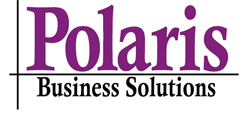Dynamics SL vs. Acumatica: A Comprehensive Comparison
For organizations still using Microsoft Dynamics SL, the writing has been on the wall for some time. With mainstream support officially ending on January 9, 2024, Dynamics SL users are facing a critical decision: continue on an outdated system with limited support or transition to a modern ERP solution. In contrast, Acumatica has been investing heavily in innovation, making it an attractive choice for businesses looking for a future-proof ERP solution.
This blog explores the key differences between Dynamics SL and Acumatica, highlighting why many businesses are making the switch.
1. Product Investment & Support
Dynamics SL:
• The last major release, SL 2018 CU11, was in December 2023, but updates have been minimal over the past several years.
• Microsoft has significantly reduced its investment in the product since 2018.
• As of January 2024, SL is in extended support, meaning only critical security updates (if any) will be provided.
Acumatica:
• Acumatica releases two major updates per year, with continuous enhancements across all modules.
• The latest release, Acumatica 2024 R2, includes 207 pages of updates and improvements, showcasing the company’s commitment to innovation.
• Strong financial foundation with OEM contracts globally, ensuring longevity and continued R&D investment.
2. Cloud-Based vs. Legacy System
Dynamics SL:
• Requires on-premises installation, often needing VPN connections for remote access.
• Users must manage hardware, software updates, and security patches manually.
• Integrations with cloud-based applications can be cumbersome.
Acumatica:
• 100% cloud-based ERP with the flexibility to be deployed on AWS, Azure, or a private cloud.
• Accessible from any device with an internet connection—no need for workstation setups or VPNs.
• Seamless integrations with cloud-based applications like HubSpot, DocuSign, and Office 365.
3. Licensing & User Access
Dynamics SL:
• Traditional per-user licensing model, requiring businesses to purchase additional user seats.
• Concurrent seat limitations can restrict system accessibility and scalability.
Acumatica:
• Unique pricing model based on resource usage rather than user count.
• Unlimited users, allowing companies to grant access to employees, partners, and customers without additional per-seat costs.
• Enhanced collaboration through role-based security and customer portals.
4. Industry-Specific Functionality & Customization
Dynamics SL:
• Legacy ERP system with limited industry-specific enhancements.
• Many functionalities require third-party ISV solutions.
• Customizations can be complex and costly to implement.
Acumatica:
• Offers specialized editions for Construction, Manufacturing, and Professional Services.
• Many previously third-party ISV functions, such as e-banking, are now built into the core product.
• Low-code/no-code customization options for tailored workflows and reporting.
5. Integration & Ecosystem
Dynamics SL:
• Limited direct integrations with modern cloud applications.
• Older technology stack makes modern integrations more difficult.
Acumatica:
• Native integrations with a wide range of cloud-based tools, including CRM, eCommerce, and financial applications.
• Built-in connectors for services like HubSpot, Avalara, Smartsheet, and Procore.
• Open API architecture allows for seamless third-party integrations.
6. Mobility & Accessibility
Dynamics SL:
• Requires a desktop client installation.
• Limited mobile access, often requiring additional configurations.
Acumatica:
• Accessible from any device, including desktops, tablets, and smartphones.
• Mobile app for approvals, dashboards, and reporting.
• Even voice-enabled access through Alexa for data queries.
7. Future Outlook
For businesses still using Dynamics SL, the lack of future investment and innovation poses a significant risk. Microsoft has shifted its focus to other ERP solutions like Dynamics 365, leaving SL users with an uncertain future. In contrast, Acumatica continues to grow, invest in new technologies, and expand its capabilities, making it a strong choice for businesses looking for a long-term solution.
Conclusion: Why Businesses Are Moving to Acumatica
• Ongoing investment: Regular updates and feature enhancements.
• Modern cloud-based infrastructure: Accessible from anywhere without complicated setups.
• Flexible licensing model: No per-user fees, making it cost-effective.
• Seamless integrations: Native support for cloud applications and APIs.
• Industry-specific solutions: Tailored for various business needs.
As businesses evaluate their next steps, Acumatica stands out as a compelling alternative to Dynamics SL, offering a robust, scalable, and future-ready ERP solution. If you are looking for more information about Acumatica and Dynamics SL, here are a few links to explore:
If you have additional questions about the timeline of Dynamics SL or Acumatica, please email us at info@polaris-business.com.
